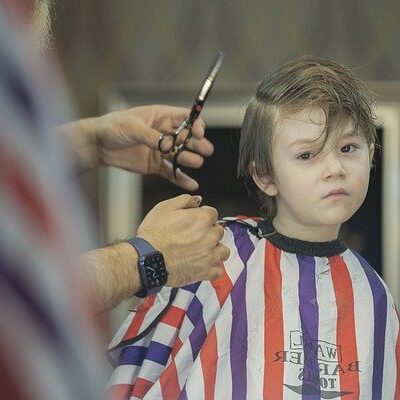Why do I charge more for children’s haircuts?
“A legitimate question, young man, deserving a legitimate answer…”
— Wile E. Coyote
Growing up, the Bugs Bunny and Roadrunner Show was a never-miss on Saturday mornings (Tom and Jerry was our favorite on weekdays).
But I digress…
At first glance, charging more for a child’s haircut seems to be completely backward, especially when there are major chains which charge less to cut a child’s hair. After all… the smaller the head, right? Don’t most restaurants also have a kids’ menu?
Much of this post applies to children between 1 and 7 years of age. Usually by eight, they have grown out of behaving in ways which affect the haircut and/or where a parent needs to get involved
This post developed into being a long read… yet if we’re talking about your child. it is completely worth it.
The almost too short version:
- I’ve cut a lot of children’s hair… There’s very little that makes me smile behind the chair like a child’s face when they love their haircut!
- If the child is sitting relatively still and allows the haircut to happen, then I only charge $20.
- If they create safety concerns or if their actions cause the haircut take significantly more time than a regular haircut should, I’m charging more for it.
- I’ll break it down below…
A haircut is not a normal part of a child’s daily routine
Until they have gotten used to it, when a child is brought for a haircut, they are in an unfamiliar environment. This creates either a sense of excitement, or of nervousness… sometimes both.
When I am cutting a child’s hair, I focus on their experience and our safety more than I focus on the haircut. Many kids aren’t used to having someone running a vibrating machine up against their head, getting tickled (or thinking they’re being hurt), and being told to hold still, all at the same time.
I want them to have a good time and I don’t want to create a traumatic experience for them, even if I have to stop the haircut altogether and have them come back to finish it.
I’d rather perform the service for as long as the child will “let” me and then have them be brought back at another time to finish the job, than a parent forcefully hold them still while I work my clippers onto their heads with them jerking around and crying their eyes out.
Ticklish and/or nervous children
Many children pull their necks away and try to prevent me from touching them with the clippers. When a child is ticklish, it is very hard for them to stay still when there’s a buzzing and tickling machine at their neck.,.. especially with today’s fades and other styles that more kids are sporting.
I have a couple of tricks I use to overcome this, but the child has to have the desire to cooperate to make them work.
Scared children
When a child is scared, they can be very unpredictable… it doesn’t matter if I am using either clippers or scissors. They jerk their head at random, maybe start waving their arms and trying to knock the tools away, or worse.
I have had a child try to grab the blades of my shears… that would not have gone well for them.
Many of the times I have cut myself involved a child’s sudden movements.
At some point, we can’t force the child to allow a hair cut… and that they will only let us go so far before losing their temper or putting themselves into a dangerous situation, sometimes needing me to stop the haircut.
In these cases, the parent pays for the service and can bring the child back at another time (at no charge) to see if they will let us finish the cut.
How a parent can help
I’ve cut a lot of children’s hair, and I’ve seen a lot of parents try to help, and the effect on the child’s experience and behavior. The most successful approaches I have seen are when a parent works to make the child more comfortable, or are giving the child a sense of accomplishment.
Helping the child to be more comfortable
There are times when a parent’s presence puts the child more at ease. Sometimes I will involve the parent, and other times, the parent is a good distraction for what is happening. The parents who help the child have some fun and see the haircut as a positive thing have the best success.
Some parents have held their children in their laps as I cut their hair. This has had varying levels of success… when it works well, it works very well. When it doesn’t, it can become super awkward really quick, and the haircut will not be complete.
Pro tip for ladies: Wear a bra or some other top underneath your shirt. Little ones can and do pull shirts down.
Encouraging a child’s sense of accomplishment
Positively encouraging children and telling them what a good job they are doing by sitting still has been the most effective thing I have seen done. Even a little high-five in front of their shoulder works well.
Here’s the trick… it’s gotta be genuine. Children can sense BS. Parents can direct kids by talking about how brave they are and that they know they can do it, and how awesome it’s going to look after the cut.
Doing the things that you know work with your child
Nobody knows a kid better than the parents! You know the tricks, the bribes, the phrases, even the songs that get children focused (even if it’s for just five seconds). Once you are invited to join us at the chair, feel free to participate and make their experience as “normal” as possible for them
Where parental involvement with the haircut goes wrong
Sometimes, well-meaning parents make tense situations worse, or even create bad situations before they even start.
Give the child some space
When I cut a child’s hair, the parent sits in a chair across the room from us. I’ll invite the parent to join us at the chair when appropriate, such as when having conversations about the haircut. Sometimes, I’ll invite the parent over to give the child some comfort, assist, and/or participate. I am open to suggestions, feedback, and questions… as long as it doesn’t create a “helicopter parent” situation.
Crossing the line from encouraging into frustration
It’s a haircut… and if it’s not a great time for the child, it can wait… and if it is being a bad time for the parent, then it really should wait. I don’t know how to explain it, but when the parent is on edge, the child is on edge. I have had to ask parents to go take a walk while I cut their child’s hair.
Forcefully holding the child in place
It’s common for kids to sit on their parents’ laps while getting their hair cut. It give a lot of opportunities for play, bonding, distraction, hugs and kisses…
…and yes, it allows the parent to gently hold their head in place for me to cut.
Where it goes wrong is when it pushes the child into any sort of tantrum state and now the parent is having to use their “vice-grip strength” to force their child to stop hiding their head.
This can turn into a traumatic situation for the child, a frustrating experience for the parent, and a potentially dangerous setting with sharp objects and kids making sudden forceful moves. The haircut ends when I see this (see “Three Safety Strikes” below. Your child’s safety, your safety, and my safety, are more important than any haircut.
A child’s haircut typically takes longer to complete
Kids can be curious and/or nervous by nature… and their movements can cause steps to have to be repeated multiple times
Here’s one of the most common I see: I’m holding their hair, measured for the next cut… and then the child turns their head quickly and the hair slips out from between the fingers and I have to comb and measure again… often two or more times.
Many times, they’re just looking around or wanting to talk to a parent, or to show a parent what’s going on. Yet when each cut needs three attempts, it triples the amount of time needed to complete the haircut.
This is where the higher price comes from.
Yet when a child is calm and gets their haircut without an unreasonable amount of fuss, I only charge $20 instead of the regular $45.
Three “safety strikes” and the haircut ends
I love playing games with the kids in my chair. When they are even somewhat into what is going on, they are some of the most fun haircuts I ever do. I literally get to channel my inner 6 or 12-year old when I’m cutting their hair!
When safety becomes an issue, however, I am very strict about it, and I make the parent aware.
I like to guide children through haircuts, and the look on their faces is magic.
However, when the child isn’t into what is happening and they start the defensive behaviors, I have to pay much closer attention to what they are doing and how it affects our safety.
After reasonable coaching (when feasible), if the child puts themselves or me into a dangerous position, I will call a “safety strike” and explain to the child and to the parent what the danger is, the cause, and try to offer a way to help keep it from happening again.
A second “safety strike” raises the price to $30.
Once I call a third “safety strike,” the haircut ends. I charge $45, and the child may come back a second time (at no additional charge) to see if they’ll let me finish the haircut.
The parent is the boss, and can stop the haircut at any time
Before I call that third “safety strike,” if the parent realizes that the child is not going to cooperate in this visit, they can stop the haircut.
I will only charge $20 ($30 if a second “safety strike” has been called), and they can still come back to get the cut completed without being charged a second time.
So why does it have to be so complicated?
Kids are fantastic… and I want their experience with me to be a great and fun one.
I’ve seen too many children put through a traumatic experience because the parent wants the hair cut, and it is going to get done, come hell or high water. I’ve seen parents put their kids in a vice-grip type of hold against their body and force them to get their hair cut. I’ve seen kids screaming and crying louder and harder than my 2 year-old granddaughter’s tantrums.
Parents know their kids better than anyone else does, and the parent is more in tune with how the child behaves and their facial expressions and body language. The rising price structure is really there to incentivize the parent to stop the cut if they think their child is being put through too much that they don’t want to do.
…and if they believe we can complete the cut, I want to get it done for them…
While it breaks my heart when I play a role in making a child cry (it affects me… I don’t like being that guy), there’s no feeling like seeing a child’s swagger and smile when they love how they look!
Feel free to contact me if you have any questions or if I can help clarify anything.

